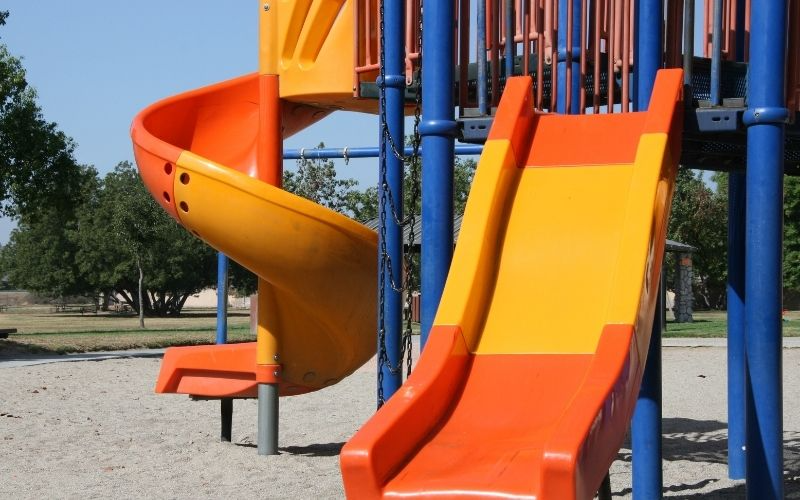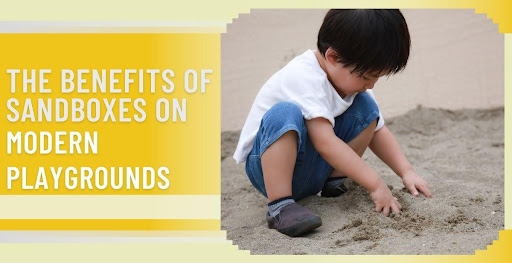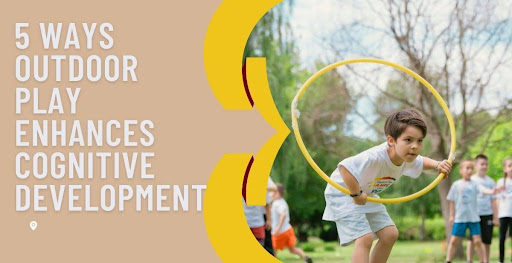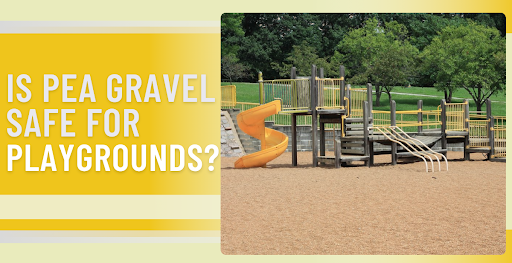How to Choose a Playground Slide: Your Guide
Learn how to choose a playground slide. Compare sizes, materials, and types to find the best fit for safety, fun, and budget.

.jpeg)
A playground slide is often the star of the playground. Kids run to it, line up for it, and go down it again and again. But choosing the right slide takes more than picking the brightest color.
Height, type, material, and safety all matter. This guide walks you through what to look for before you install one.
Benefits of Playground Slides
Slides do more than entertain. They help children develop balance, coordination, and confidence. Climbing up builds strength while sliding down teaches body control. Slides also encourage turn-taking, which naturally builds social skills.
Different Types of Playground Slides

Straight Slides
Straight slides are the simplest and most recognizable type. They’re great for beginners and provide a quick, direct ride. Because of their design, they’re easy to supervise and maintain.
Key Features:
- Ideal for younger children learning to slide
- Provides a quick, direct path
- Easy to install and maintain
- Fits small and large playgrounds
- Encourages repeat use with minimal wait time
Curved Slides
Curved slides add excitement by bending left or right. The slight curve makes the ride feel longer and adds a playful twist without making it too intense. They’re often safer than straight slides because the curve reduces speed.
Key Features:
- Slower speed than straight slides
- Engaging twists for more fun
- Works for mixed-age groups
- Adds visual variety to playgrounds
- Encourages children to ride multiple times
Spiral Slides
Spiral slides loop around in a full or half circle. They’re visually striking and fit well in limited spaces because of their vertical design. Kids love the sense of adventure and the longer ride.
Key Features:
- Space-saving vertical design
- Provides a longer ride than straight slides
- Eye-catching structure for any playground
- Works best for older children with balance
- Creates a sense of excitement and challenge
Wave Slides
Wave slides feature gentle bumps along the path. These small dips create a rollercoaster-like effect without being too steep, making them ideal for children who want a thrill but not too much speed. They’re popular in schools and community parks.
Key Features:
- Gentle bumps for extra excitement
- Slower pace than steep slides
- Appeals to school-aged children
- Safer thrill compared to taller slides
- Encourages laughter and repeated use
Tube Slides
Tube slides are enclosed, creating a tunnel effect. They offer shade and mystery, which children find exciting. However, they may feel too dark for very young kids.
Key Features:
- Provides sun protection inside the tunnel
- Encourages imaginative play
- Slows riders down for added safety
- Works well in themed playgrounds
- Creates an adventurous, enclosed experience
How to Select the Best Slide for Your Playground

A. Sizes
Slide size should match the playground’s space and the age group using it. Smaller slides (under 4 feet) are best for toddlers, while mid-sized slides (5–8 feet) suit preschool and elementary children.
Larger slides above 8 feet are often used in community parks and require more surfacing and supervision. Choosing the right size ensures safety and usability.
Slide sizes:
- Toddler slides (under 4 ft)
- Preschool slides (4–6 ft)
- Elementary slides (6–8 ft)
- Large community slides (8+ ft)
- Extra-wide or double-lane slides
B. Materials
The two primary slide materials are plastic and steel. Plastic is safer for younger children because it doesn’t heat up as quickly and has smoother edges.
Steel is durable, weather-resistant, and suitable for heavy use in public spaces. Some markets also offer fiberglass slides, though they are less common today.
C. Shapes
Slides come in many shapes to suit different play experiences. Straight slides are simple and quick, wave slides add bumps, spiral slides save space with twists, and tube slides provide mystery and shade. Offering multiple shapes in one playground encourages repeated use and varied play.
D. Colors
Color choices affect both attraction and theme. Bright, bold colors like red, yellow, and blue immediately catch children’s attention and promote excitement.
Natural or muted tones, such as green or brown, blend better in parks with natural settings. Using contrasting colors can also improve visibility and wayfinding.
E. Cost
The cost of a playground slide depends on size, material, and design complexity. Smaller plastic slides may be budget-friendly, while larger steel or tube slides are more expensive.
Installation, surfacing, and long-term maintenance should also be factored into the budget. Balancing cost with durability ensures the best long-term value.
Age-Appropriate Platforms for Slides
- For toddlers, slides should connect to low platforms with easy steps.
- Preschool and elementary slides should be paired with platforms that allow for climbing challenges, such as ladders or nets.
- For teens, taller slides or multi-story towers can create a sense of adventure while still meeting safety standards.
Tips for Picking the Right Playground Slide
- Match slide type to the ages of children who’ll use it most.
- Consider sun exposure; tube slides offer shade while metal may heat up.
- Always check for compliance with playground safety standards.
- Think about the flow of play—place slides where kids can climb back up without congestion.
- Balance budget with durability; cheap options wear out quickly.
Conclusion
The right playground slide strikes a balance between fun, safety, and design. By weighing size, shape, material, and age-fit, you’ll choose one that children will use daily and parents will trust.
If you’re planning a playground project and need expert support, visit Park N Play Design for professional guidance and high-quality options.



.jpeg)
.jpg)
.jpg)





%2520Which%2520Is%2520Better%2520for%2520Playgrounds.png)
